Solving a Sudoku Step by Step
Here you can find a Sudoku and its step-by-step solution.
This Sudoku was generated with the program Ksudoku. The program rated it as medium difficult.
-
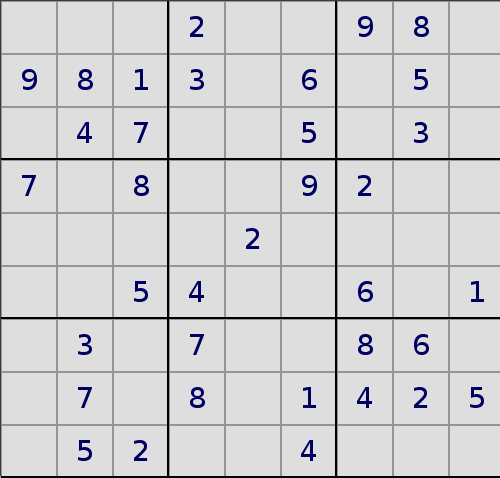
- A Sudoku that's going to be solved step by step.
Here it is in its full beauty.
To solve it, you should first use the method named crosshatching.
You look for occurrences of a 2. (Well, you would start
with a 1, but you would not be successful).
In my mind I mark each row and column that contains a 2. You can
these these markings in the figure below:
-
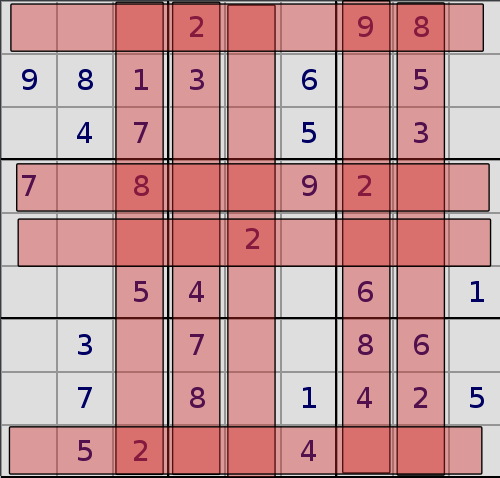
-
All columns and rows containing a
2are marked red.
Now you search for 3x3-sub grids that don't contain a 2 already.
If there is only one cell not marked in such a 3x3-sub grid you mark it
(green):
-
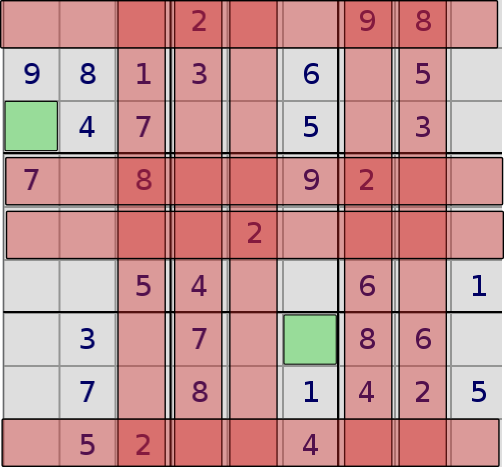
-
All cells which have to be filled with a
2are marked green.
There you can enter a 2:
-
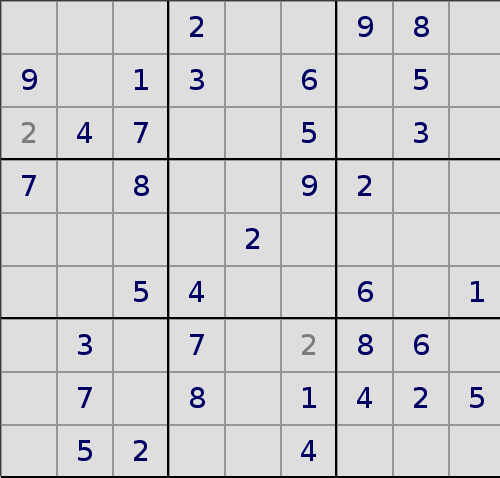
-
The Sudoku with the newly found
2s.
Now you repeat this process with the next numbers. Scanning for
3 and 4 doesn't yield a result, scanning for
5 does:
-
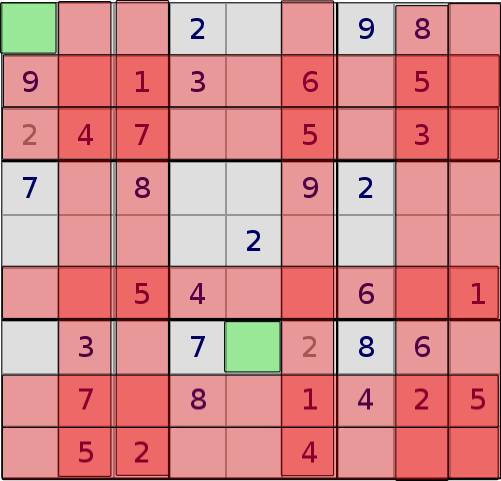
-
Search for places for
5s using scanning.
You can enter the 5s at the marked cells:
-
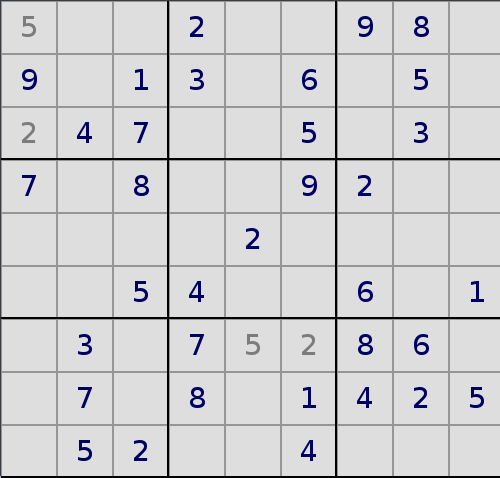
-
The Sudoku with the newly found
5s.
The next successful search is that for a "8":
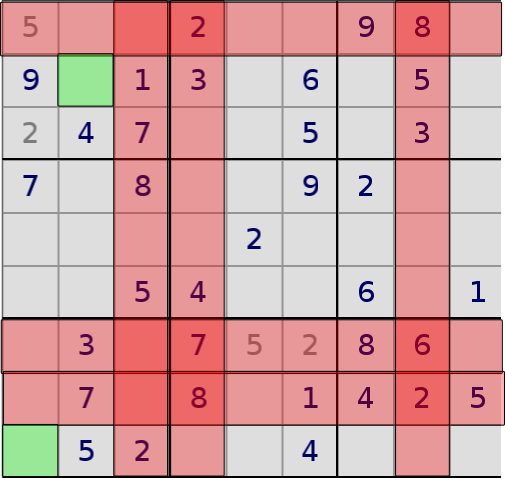
After the first pass of scanning our Sudoku looks like this:
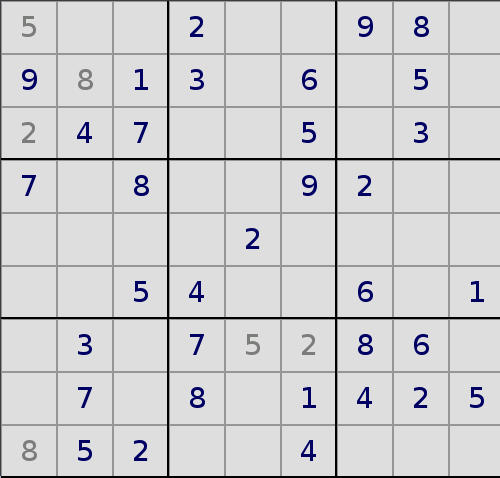 top
top
Now we could try again to scan for some numbers. It would probably be successful because we entered some numbers since we started.
But I want to illustrate another solving algorithm: searching for nearly full entities.
You take a closer look at the 3x3 sub grid in the upper left corner.
Only two numbers are missing there, namely "3" and "6". The figure below hilights this block (blue) and the empty cells (teal):
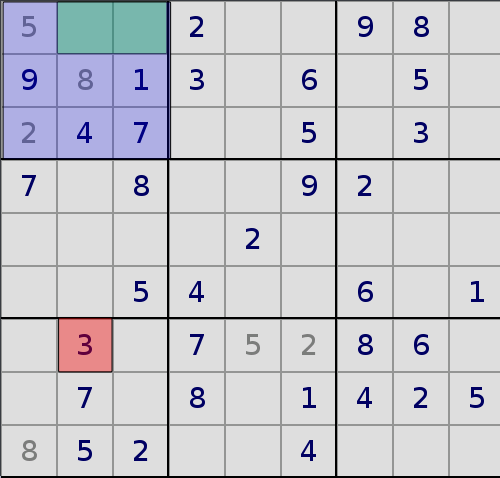
But where can you enter the "3", and where the "6"? You can answer this question by looking at the bottom of the Sudoku. In the second columns there is a "3" (marked red). Since it is forbidden to have a number twice within the same column, you can't enter a "3" in the select 3x3-sub grid in the second column. You have to enter the "6" there. Which leaves just one place for the "3":
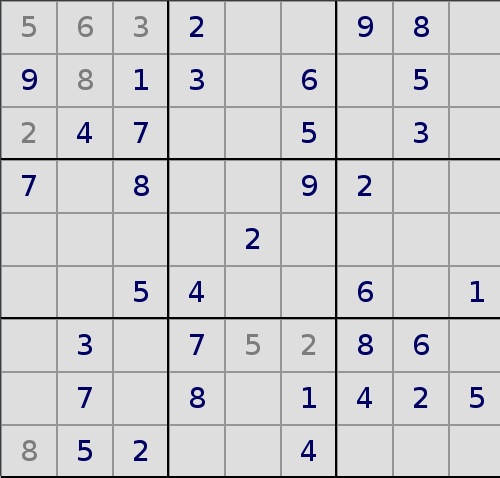 top
top
Now it's time to look at the 7th row. It is missing the numbers "1", "4" and "9":
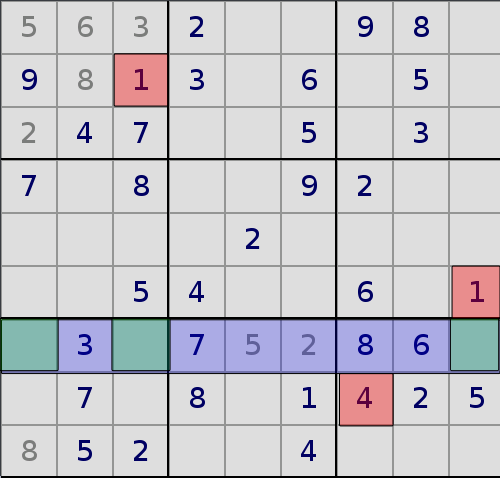
The "1" can only be placed in the left-most column because in the other columns where it were possible there are "1"s in other rows.
In the right-most column there can't be a "4" because in that 3x3-sub grid there is one already. Which leaves only one place for the "4":
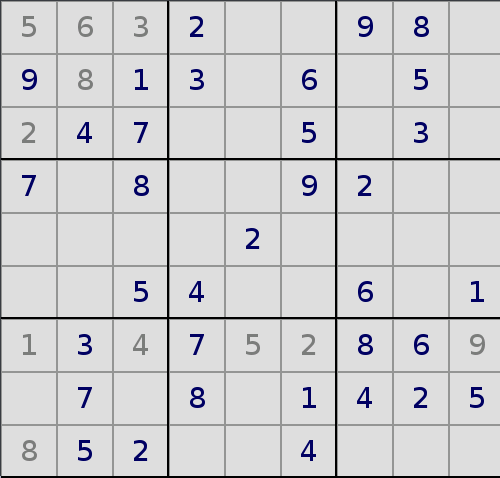 top
top
In the first row there are only three cells left blank as well, the missing numbers are "1", "4" and "7".
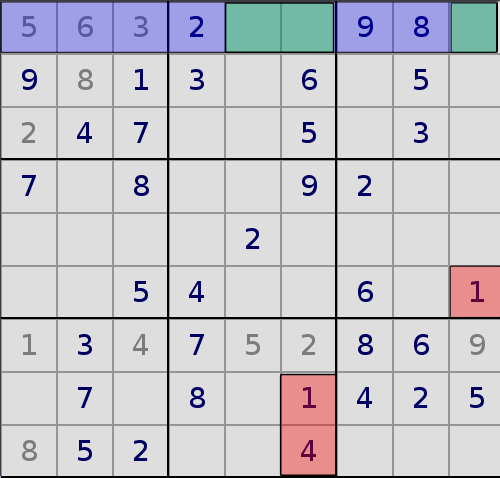
In the middle end right most free cell there can't be a 1
since in theses columns there already are ones. The 1 has to
go in the left most free cell.
The 4 and 7 still have to be placed. But in
the sixth column there already is a 4 (in the last row), so
the 4 goes in the right most free cell, e seven remains for
the last empty one.
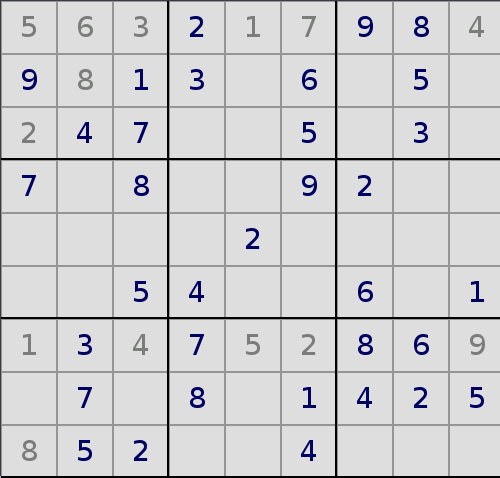 top
top
A look at the middle block in the first row shows that only 4,
8 and 9 are missing.
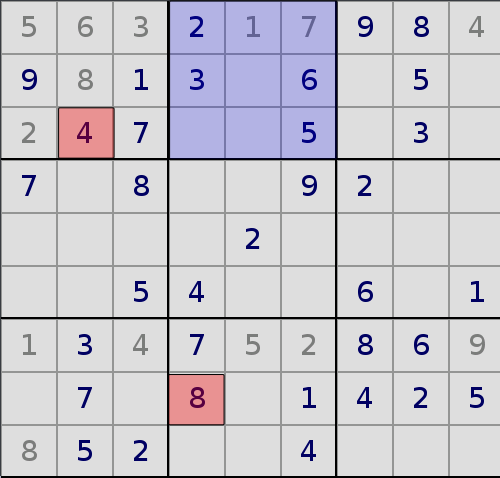
Again it is easy to find numbers outside the selected block that resetrict the placement of the missing numbers.
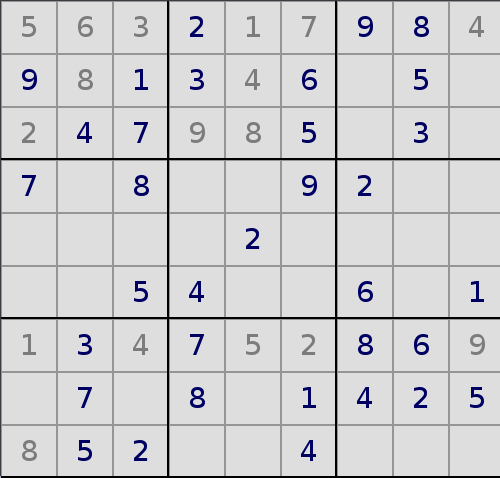 top
top
The upper right block is easily filled now:
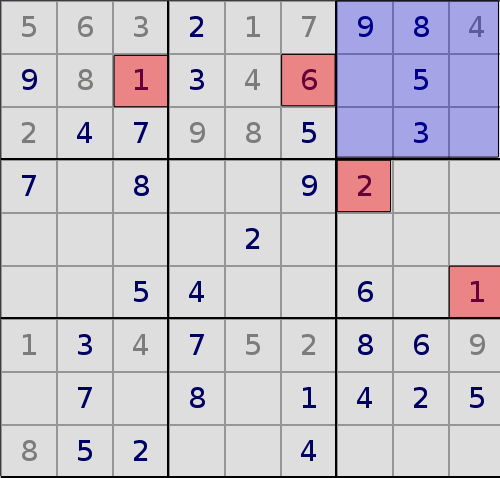
First you find a place for the 1, then for the
6. After that you only have one place left for the
2, which leaves the 7.
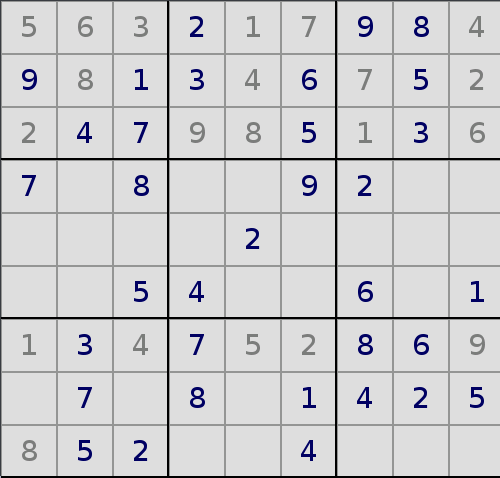 top
top
Now you now the drill. We continue with the left most lower block and after that the third column:
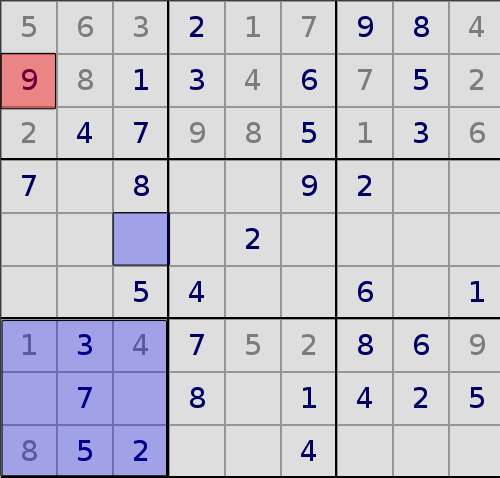
Once that block is filled, there is only one number left int the third column:
 top
top
Now you can fill the seventh column:
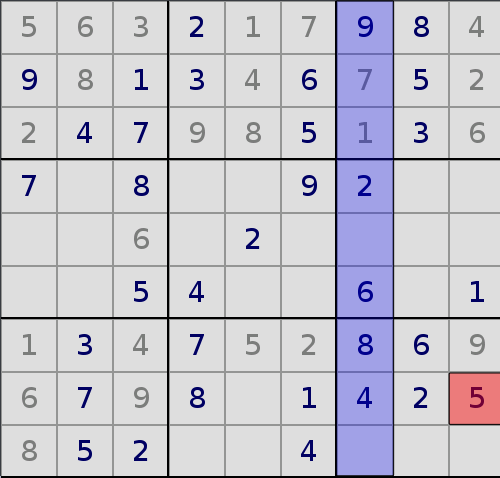
3 and 5 are missing, but the last lowest of
the blocks still has a 5:
 top
top
Now there are many nearly full entities that help us to place number, for example the right most column:
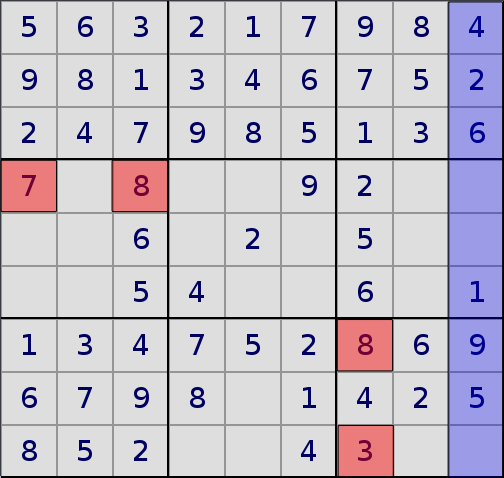
The 8 can only go into the middle row, the 3
can't be in the lowest 3x3 block, so you can find a place for them.
 top
top
Now the right most lowest 3x3 block is nearly full, everything is in
there except a 1:
 top
top
By now my comments should be boring to you. Therefore I will just show you the images, you can find out what to do on your own:
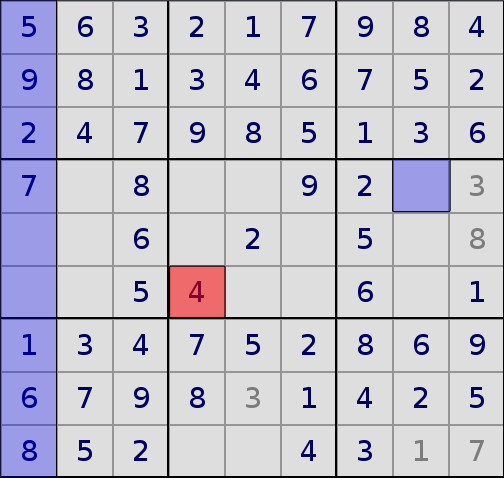
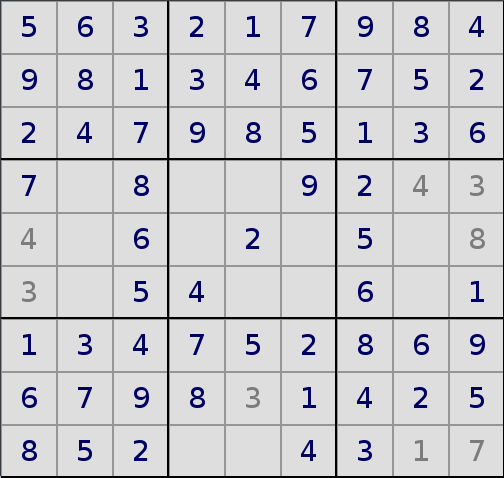 top
top
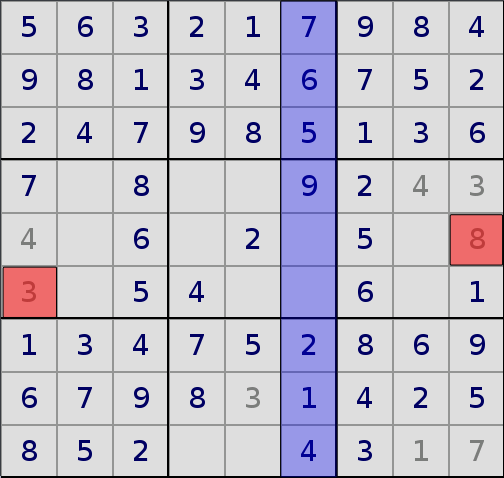
 top
top
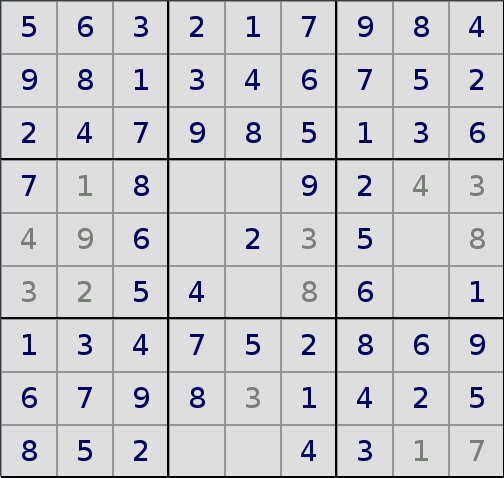
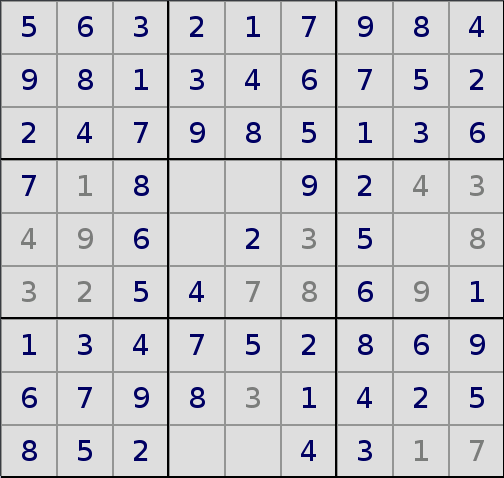 top
top
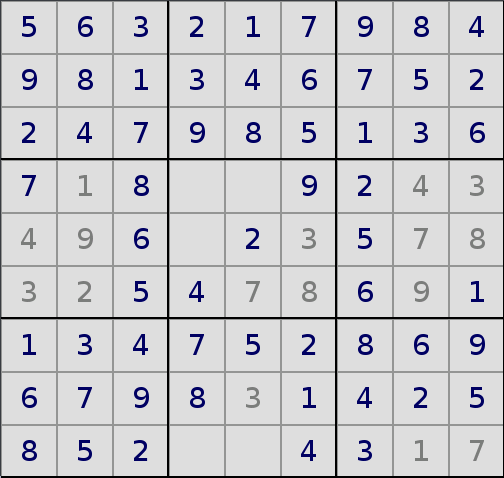
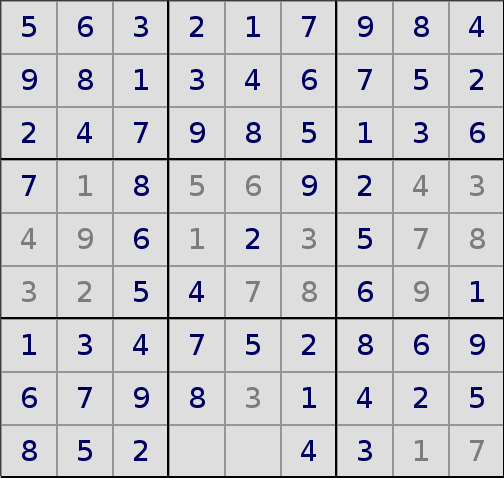 top
top
Und schliesslich das gelöste Sudoku:
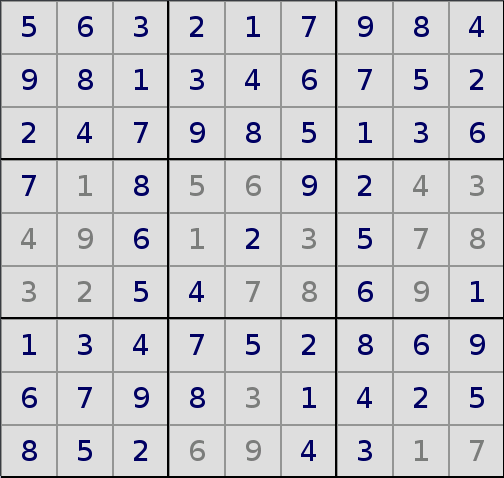
That's it.
top